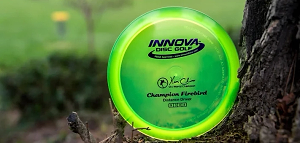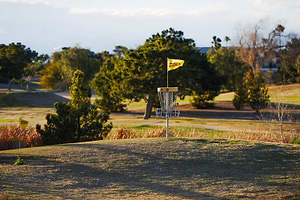Hyzer Vs Anhyzer: Get Them Straight
TOC
Table of Contents
Before you go any further in disc golf, learn the difference between Hyzer vs Anhyzer. These two unusual words are among the most important disc golf throwing terms. And, after a few short minutes reading this blog, you’ll be ready to use these words correctly in your disc golf lingo.
Table of Contents
Difference between Hyzer & Anhyzer?
When it comes down to it, hyzer vs anhyzer refers to the angle of release of the disc. A hyzer angle is where the edge of the disc on the opposite side of your contact point is angled down (For RHBH). An anhyzer angle is where the edge of the disc on the opposite side of your contact point is angled up (For RHBH).
**Hyzer and anhyzer can also refer to the shots produced from these angles of release. More about the hyzer and anhyzer throws in the coming paragraphs.
What’s RHBH?
It stands for Right Hand Back Hand throw. It’s the throw most players start with and it’s the throw we’ll be referring to for this article and many others (It’s keeps things simple and shorter). Whatever directions we mention for RHBH flight, just insert the opposite direction for lefty backhand and righty forehand. Lefty forehand shots fly the same as RHBH.
What is Hyzer?
Hyzer refers to the angle of the disc and/or the flight path of the disc relative to the thrower. Using terminology from our cousin, golf, a hyzer is kind of like a hook, in which the disc initially starts out straight, but soon veers to the left (for a RHBH thrower). This happens because of the way the disc is thrown (or angle of release). In the case of the a hyzer, it’s when the edge of the disc on the opposite side of your contact point is angled down.
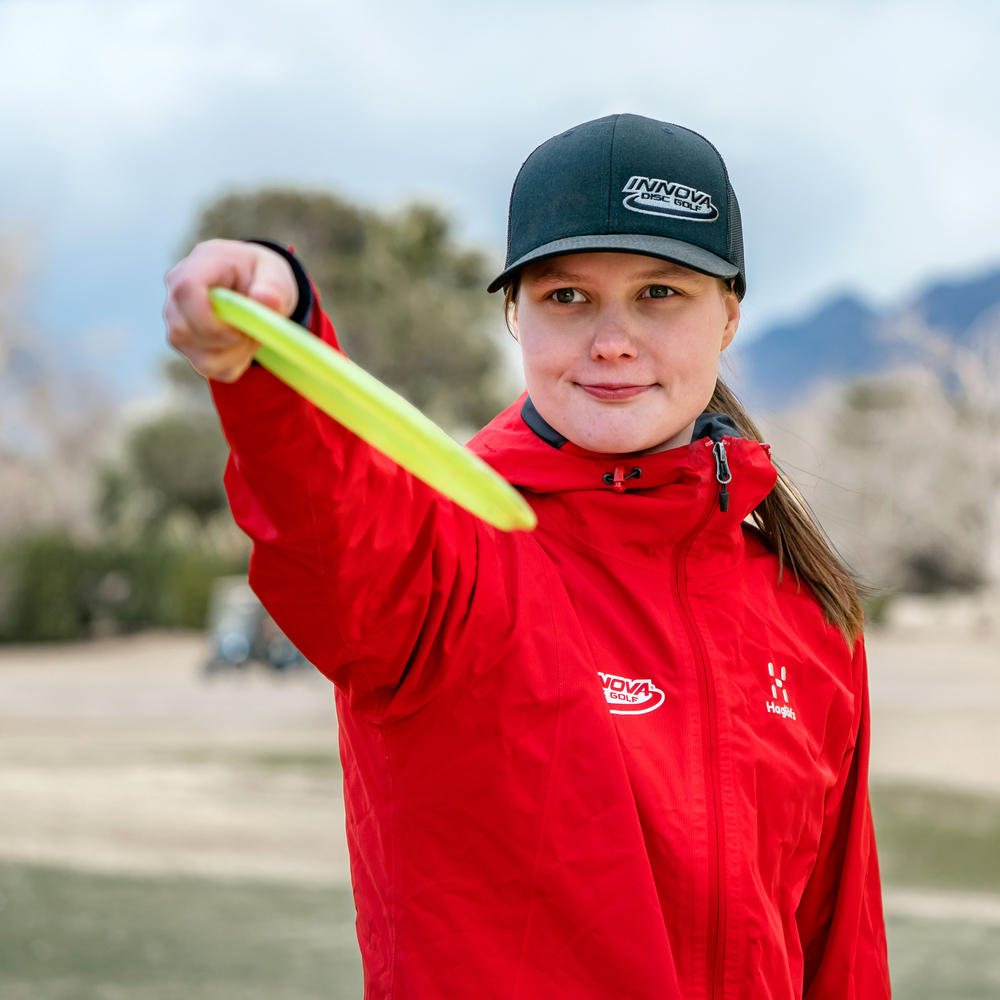
How to throw the disc Hyzer
Though many people stress wrist angle, hyzer and anhyzer shots all start with your body, specifically your back. For RHBH, start by gripping the disc flat. Then, bend forward. How much will depend on how severe of a hyzer release angle you wish. You will find that what your back (and overall body) does, your wrist follows suit with the corresponding hyzer angle. Bending your body forward to form a hyzer shot and maintaining that tilt through the release maintains the hyzer line you wish to throw and ensures a good follow through.
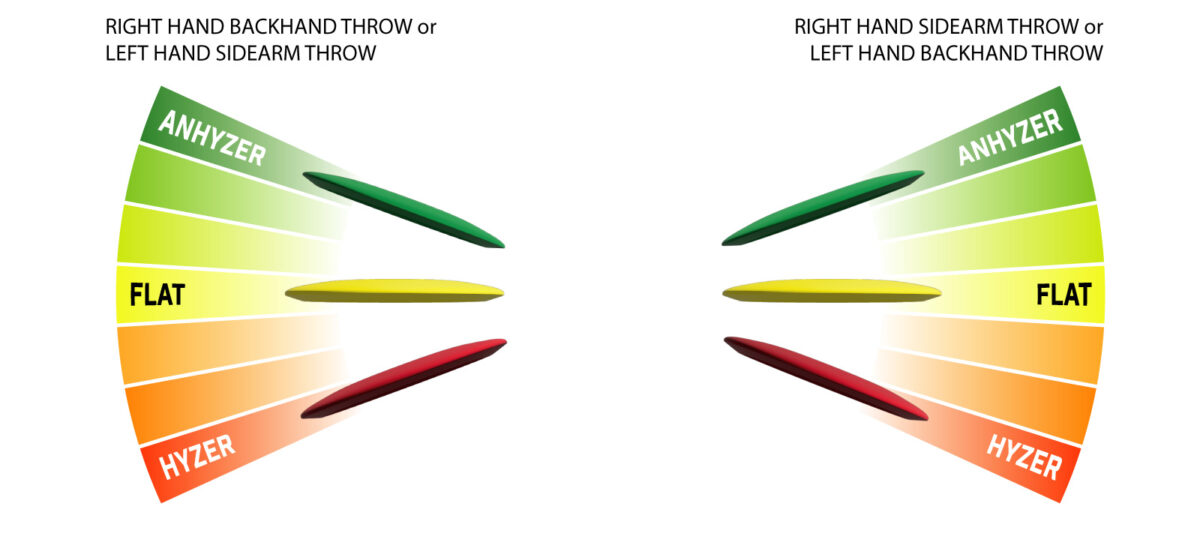
Different degrees of hyzer = different hyzer lines (RHBH)
- Bend forward just a little bit to create a slight hyzer line
- Bend forward a lot for a severe hooking hyzer
- Or, any amount in between to find that perfect hyzer line
How to throw Hyzer forehand: Throwing a hyzer forehand follows the same principle of incorporating your body to shape the desired hyzer line. The main difference is that the disc is now angled up for a forehand hyzer.
Hyzer: disc golf’s easiest throw
The first throw that practically every new disc golfer makes, whether it’s deliberate or not, is a hyzer throw. A big reason for this is Fade. Fade is a disc flight component (or flight rating number) that makes the disc veer back to the ground at flight’s end. For novices, with limited power and technique, fade kicks in right away producing an automatic hyzer-like flight.
Many people who come from an Ultimate Frisbee background or are just used to playing catch in the park are naturally accustomed to hyzer throws. Those flying discs are generally very understable and will flip up and glide naturally when thrown on this kind of angle.
Innova Flight Numbers
FYI: Innova created and popularized the four number flight ratings system which has become ubiquitous to golf discs and history of disc golf. All discs, even those made by different manufacturers, use the system to quickly explain how the disc behaves in the air.
3 Reasons to throw Hyzers intentionally.
- Getting around obstacles. Tree in your way? Dogleg turn up ahead? Time for a Hyzer!
- Precise Landings. Straight shot too problematic? Hyzer to the bullseye!
- Control. Worried you’ll hit something breakable? Hyzers are some of the most dependable shots.
Hyzer thrown with overstable discs
With overstable discs like a Toro or Firebird, hyzer shots will hook sooner. This predictable finish to the left (RHBH) can give you excellent control if you have high power.
Hyzer thrown with understable discs
With understable discs like a Roadrunner or Stingray, hyzer shots will smooth out and become less severe. Understable discs are best for beginners learning to throw hyzer.
3 Common types of Hyzer shots
- Baby Hyzer: Just a touch of hyzer is all some discs need to keep their straight and narrow path.
- Monster Hyzer or Spike Hyzer: Severe downward angle sends this shot high into the air but then sharply careens down to earth.
- Hyzer Flip: The disc is released on a hyzer angle, but flips up to flat and glides out for great distance and control. Typically done with an understable disc. *This is a higher skill level shot, but one that is worth learning.
What is Anhyzer?
Anhyzer also refers to the angle of the disc and/or the flight path of the disc relative to the thrower. However, in this case it’s the opposite of hyzer. Keeping with our golf analogy, disc golf’s anhyzer is akin to golf’s slice. Here the disc immediately begins a left to right flight path (RHBH). After turning over to the right, the disc will eventually fade back to the left. This anhyzer flight happens because of the way the disc is thrown (or angle of release), which for an anhyzer is when when the edge of the disc on the opposite side of your contact point is angled up.
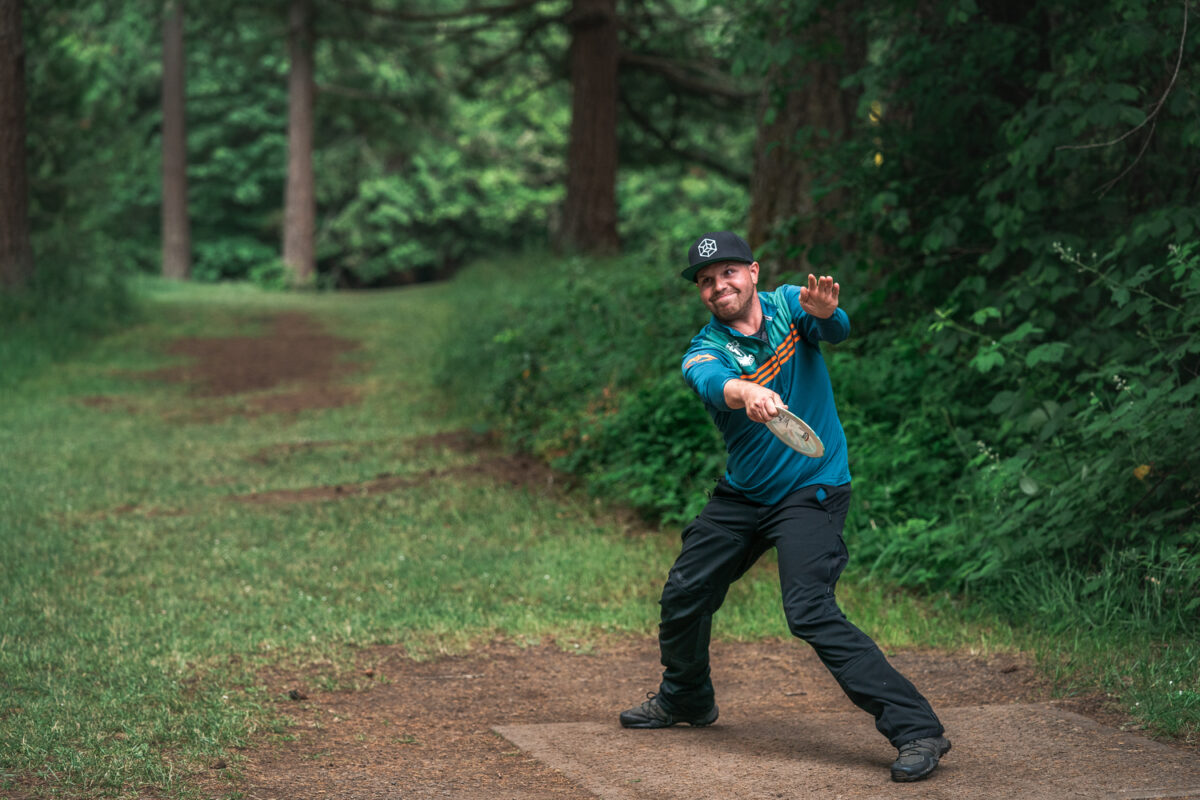
How to throw Anhyzer
Remember how we said that your body (specifically your back) has a lot to do with throwing a hyzer shot? Well, it works the same for anhyzers too. For RHBH, again start by gripping the disc flat. Then, instead of bending forward, lean back. How much will depend on how severe of an anhyzer angle you wish to throw. Continue that back tilt through the shot. Incorporating your body (Just like with the hyzer shot), allows you to better maintain the anhyzer line you wish to throw and ensures a good follow through.
Different degrees of anhyzer = different anhyzer lines (RHBH)
- Lean back just a little bit to create a slight anhyzer
- Lean back a lot for a dramatic turnover or roller
- Or, any amount in between to find that perfect anhyzer line
How to throw Anhyzer forehand: An anhyzer forehand largely works the same as a backhand anhyzer. The main difference is that the disc is now angled down with the forehand grip.
Want to learn more disc golf terms?
From the disc to the disc golf course, our Disc Golf Terms Dictionary has all the terminology to make this game make sense.
3 Reasons to throw Anhyzers
- Long range: Unlock your driver’s maximum distance potential. Great for open holes with an overstable disc.
- Right to Left fairways (RHBH): Thread the needle all the way to the green!
- Gentle Landing: Make a soft, controlled landing on the green with any anhyzer approach.
Anhyzer thrown with overstable discs
With overstable discs like a Pig or a Destroyer, anhyzer shots will fade back to the left sooner (RHBH). A good follow-through is crucial to executing the desired shot, otherwise the disc will fade much too soon.
Anhyzer thrown with understable discs
Anhyzers thrown with understable discs like a Wombat3 or Mamba will turn over (veer to the right for RHBH) and never fade back or immediately turn over and convert into a roller shot.
3 Common Types of Anhyzer Shots
- Force flex: Get distance without sacrificing control through forced anhyzer shots using an overstable distance driver.
- Roller: Often accomplished when employing an extreme anhyzer release angle, a roller can be very useful for getting out of trouble in the woods, for traversing very low ceiling shots, and for incredible distance on open, flat holes.
- Step out Forehand: Many a par scramble has been made with this shot that’s great for making up ground when there’s little space to work with in the rough.
In Summary
The best way to learn the difference between hyzer vs anhyzer throws is to experiment. Try various release angles and discs with different flight characteristics on the practice field. Some discs may work best for you as hyzers while others will be better suited for anhyzers. Once you learn the basics, you’ll be able to expand to more and more specialized shots for both backhand and forehand (sidearm) throws.
Frequently Asked Questions
Why do I keep throwing hyzer?
If you’re trying to throw a disc straight and the disc hyzers out or fades to the ground, then one of two things could be happening. One, you are inadvertently releasing the disc on a hyzer angle. Or two, the disc is too overstable for your power. Fix by maintaining a flat release or throw a more understable disc.
What does Anheuser mean in disc golf?
In disc golf, anhyzer refers to a throwing style in which the angle of the disc is pointed upward during release, the opposite of a hyzer shot. Once released, the disc initially turns to the right (Right hand backhand shot), but eventually fades back to the left. How soon it fades depends on how stable the disc is.
What’s the difference between a hyzer flip and anhyzer flex?
The main difference between a hyzer flip and an anhyzer flex is the type of disc used for each. A hyzer flip, which changes course from a hyzer flight to a straight flight, uses an understable disc while an anhyzer flex, uses an overstable disc to force a disc to turn before it naturally fades back toward the ground.
How do I know if my disc is understable?
The easiest way to know if your disc is understable is to try to throw it straight with a flat release. If the disc turns over halfway through the flight (veers to the right) during a right-handed backhand throw, then it would be considered understable.
How to choose between hyzer or anhyzer?
What’s in front of you largely determines whether you make a hyzer or anhyzer throw. If you need to veer left (right hand backhand throw), throw hyzer. If right is where you need to go, throw anhyzer.
Personalized Disc Recommendations
Just answer a few questions and we’ll send you personalized recommendations within 24 hours.
GET PRO TIPS
